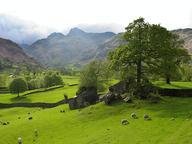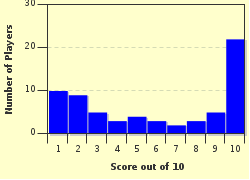Quiz Answer Key and Fun Facts
1. Lying to the east of the Kirkstone Pass, this hill has the alternative name of John Bell's Banner. Its summit is marked on the Ordnance Survey maps as 'Stony Cove Pike'. Which hill is being described here?
2. On which fell can you see the remains of 'Lowther House' and a boundary stone called 'Lambert Lad'?
3. Wainwright state that the summit of this hill is named "on the best of authority, (but not by many, one imagines) Pikeawassa". The 'best authority' today would appear to be the Ordnance Survey which labels the summit thus. Which fell, on a northern ridge from Gowk Hill, and forming one side of the valley of Fusedale, does this refer to?
4. Rainsborrow Crag is a 1,000 foot drop which Wainwright describes thus: "The safety of which is a disagreement between rock climbers and foxes". On which fell is this to be found?
5. The highest of the 'Far Eastern Fells', in the past it has had a Roman road over the top of it. In the 19th century the broad summit was used as a racecourse, hence its former name of 'Racecourse Hill'. By what name do the Ordnance Survey and Wainwright refer to it?
6. Wainwright describes the next hill as being situated at the head of three valleys. It possesses the subsidiary summit of Artlecrag Pike, and Woodfell Gill runs from its northern side into the Haweswater reservoir. Which hill, reaching over 2,300 feet is this?
7. Many hills and fells in the Lake District (and elsewhere) have summit cairns. Mostly small piles of stones but sometimes more solidly constructed. Which hill, standing above Threshthwaite Mouth has a 14 foot beacon for a summit cairn?
8. Kentmere Pike stands almost 2,400 feet high; to the south a rocky shoulder exists. This summit, which some may say is not really a separate hill, is given its own chapter by Alfred Wainwright. What is the name of this hill?
9. Lying between Bannerdale Beck and Ramps Gill, which fell lies within 'Martindale Deer Forest'?
10. To who, whom or what did Alfred Wainwright dedicate book 2 of his 'Pictorial Guide to the Lake District'?
Source: Author
paper_aero
This quiz was reviewed by FunTrivia editor
Exit10 before going online.
Any errors found in FunTrivia content are routinely corrected through our feedback system.

